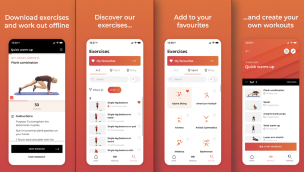Runner’s knee
As the name suggests, this condition is very common amongst runners.

Runner’s knee often occurs in sports that involve a lot of bending and straightening of the knee. Cyclists are therefore frequently affected. It is also not uncommon among football players, handball players and cross-country skiers.
As with other types of overuse injuries, this is not a specific diagnosis, but rather an umbrella term for pain on the outside of the knee. There are several theories as to how and why pain develops, but we do not know for certain. We do, however, know that you can recover with the right type of treatment.
On the outside of the hip lies a strong and thick band of tissue called the tractus iliotibialis. Also known as the iliotibial band. This attaches itself below the knee. The theory has long been that this band creates friction when the knee is bent and straightened too often, without adequate rest. It has been thought that this friction can lead to an irritation in a small fluid-filled sac called the bursa. This can be very painful. However, newer research casts doubt as to whether there is any truth to this theory. Irrespective of the cause: The result is pain.
What causes runner’s knee?
The reason you develop runner’s knee is most likely due to sudden changes in your training habits. This may involve a rapid change in training load, frequency and intensity. But changes in training surface and running shoes may also have an influence. The body’s ability to adapt is fantastic but slow. A training program must take this into account, so that load does not exceed the body's capacity to withstand that load.
Several factors may increase the likelihood of developing runner’s knee. For example, hip and knee weakness and a decreased body control can increase load placed on the knee. The same can be said about the position of the ankle, limited range of motion and running on sloping surfaces. These factors rarely matter in isolation but coupled with overload, you may develop this injury.
Did you know
that the most expensive running shoes are not necessarily the best? Research suggest that the most important thing is that your running shoes are comfortable, not custom fitted.
Signs and symptoms
The pain is usually on the outside of the knee and gradually gets worse. It is aggravated by running, especially running downhill.
A sign
that you may need some rest is if the pain persists after training and/or the day after.
Diagnosis
A doctor or a physiotherapist will take your medical history and conduct a physical examination to confirm the diagnosis. Imaging is rarely needed.
Treatment
Measures like ice, massage and tape can reduce acute pain, but have little long-term effect. The most important thing you can do is to find the underlying cause of the problem. This may involve identifying risk factors and addressing them.
Research shows that load management is important for both treatment and injury prevention. A good training program can be developed in conjunction with a trainer and a physiotherapist. When training load exceeds the body's capacity to withstand load, you may develop runner’s knee. For example by training too much, too soon. Remember to rest. Inadequate rest has shown to increase the likelihood of sustaining an injury.
It is recommended to take a break from activities or training that causes pain. You can still maintain good fitness by performing other forms of exercise that are pain-free. Examples are swimming, strength training or any other form of exercise you wish to do.
In rare cases, surgery may be needed. This is not advised until you have tried several rounds with non-surgical management.
Return to sport
If the problem has persisted a while, it usually takes longer until you have recovered completely. That is why getting treatment early is so important. It is not advised to return to your previous activity level straight away because of the risk of re-injury. A gradual increase in training load is advised.


